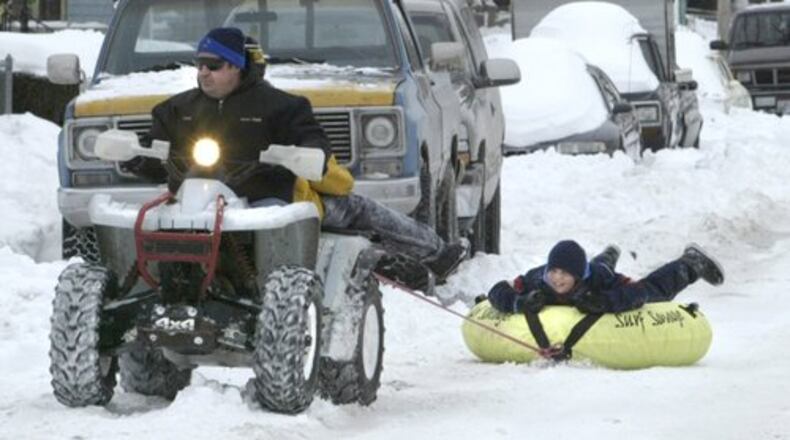By definition, a White Christmas occurs when there’s at least one inch of snow on the ground Christmas morning. While having it snow on Christmas Day may look nice, it doesn’t necessarily need to snow on the holiday for it to be considered a “White Christmas.”
The National Oceanic and Atmospheric Administration put together a map to show the historical probability of at least one inch of snow on the ground Christmas morning in the Lower 48 states. The data used was based on the latest (1981-2010) U.S. Climate Normals from NOAA’s National Centers for Environmental Information.
What it shows — no surprise, based on location — is most of Idaho, Minnesota, Maine, upstate New York, the Allegheny Mountains of Pennsylvania and West Virginia, the Rockies and the Sierra Nevada Mountains all have a high probability of seeing a White Christmas.
In southwest Ohio, Dayton and Cincinnati statistically only experience a White Christmas about 20 to 30 percent of the time. Dayton tends to see them more frequently.
The most recent White Christmas for both cities occurred in 2017. While the snow wasn’t very deep, it was enough to be considered a White Christmas. The record highest snow depth on Christmas Day was in 2004. Cincinnati had nine inches of show, and Dayton had 16.
As for a White Christmas this year, that’s tricky. Christmas is a few weeks away, and it can be difficult to forecast that far out — let alone predict at least one inch of snow on the ground by Christmas Day.
First, let’s start with the probability of precipitation. According to the National Weather Service Climate Prediction Center, there is an above-average chance for precipitation leading up to Christmas Day. That may sound like positive news, but there is also an above-average chance that temperatures will be warmer than normal. Typical highs around Christmas are in the middle 30s. That would lend itself to rain rather than snow.
The last thing to consider: how warm is the ground? The average soil temperatures have been estimated to be around the middle to upper 30s. While above freezing, it’s cold enough to collect snow, so that shouldn’t be a problem.
Taking all of the forecast and historical data into consideration, I would have to say our chances of a White Christmas are low, but not out of the question. We will just have to wait and see.
About the Author
